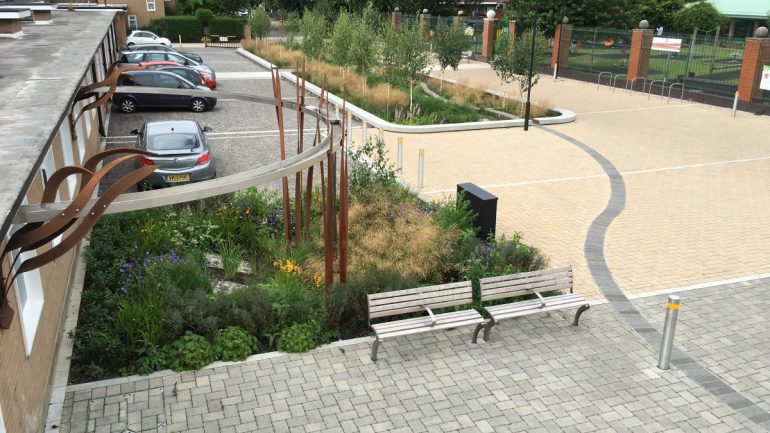
SUDS using permeable paving & lots of greens. Source: Landscape & Urban Design
Just recently, commuters along Maharlika Highway in Ilocos Sur (Bantay's Guimod) saw several huge acacia and even tamarind trees that were fallen and cut. The road leads to the now traffic-plagued city of Vigan, but some 200-300 meters away from the fallen trees. The intersection of the Maharlika Highway, Rizal Street, and the road to San Vicente have become battleneck from 6 in the morning to 7 in the evening, just like the rest of the burgeoning "cities" of the country. It did not have to be a city actually, even towns now experience motorized vehicle clogging.
To believe that "road widening" due to traffic is the cause of cutting down those trees is a sham. Which, judging on social media posts, has been widespread recently. The Department of Public Works and Highways, the biggest tax-consuming (I am trying to be subtle) agency of the country only shows how it has favored the very minority ("rich") in this country by making roads and highways less human-friendly & cater to the whims of commodity drivers & motorized vehicle producers.
While the rest of the better economies have started a tradition of adapting sustainable road design in their infrastructure, we remain very fifth-world, forgetting that we have roads, in the first place, because humans have feet.
Aside from incorporating ecosystem management in their road planning, design, and construction, some countries also have gone further in their use of sustainable urban drainage systems for their roads and parking spaces, something that the DPWH need to look into ASAP because as I understand, both incorporate trees (and flora) in their planning, design, and building.
Use of natural elements like stones, trees, and soil for surface water management.

Comments